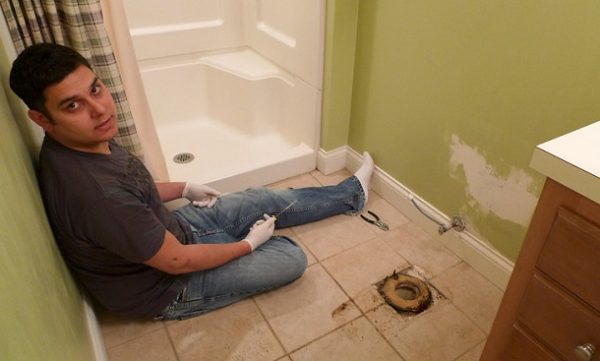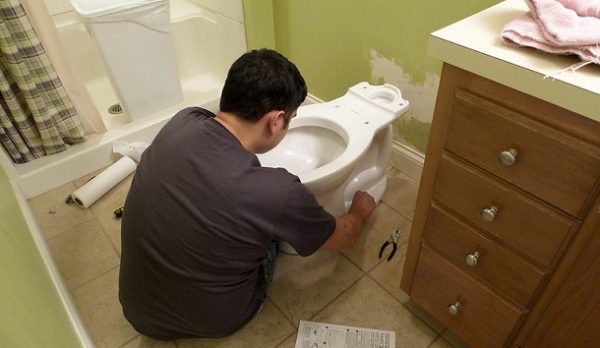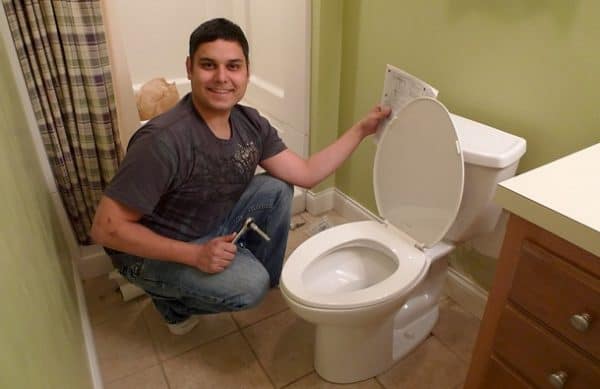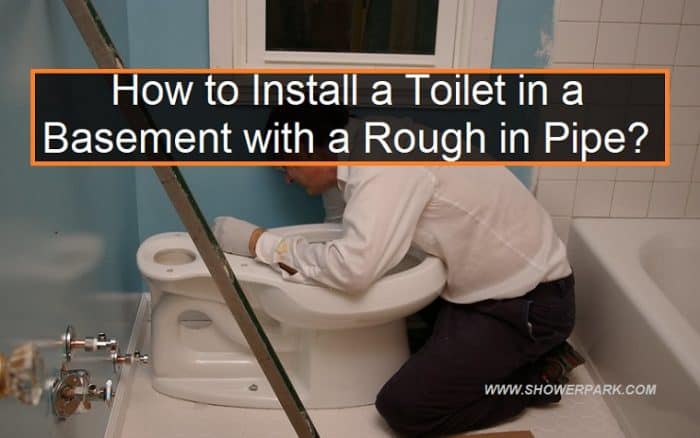Wondering what to do with your large basement? You are lucky to have one, unlike others who do not have any extra room in their house. Make the space functional by building a bathroom on it. Read this how to install a toilet in a basement with a rough-in pipe guide to help you out on how to build one.
In case you have plans of putting an additional room in the basement, you do not have to worry about the bathroom as you have it already. Also, if you have a toilet downstairs it will be much easier for you especially if you are watching a movie with your friends, then you need a bathroom downstairs.
The job of installing a toilet in a basement is quite daunting, and you must have proper planning and knowledge on how you will carry it out. There are things that you need to consider before you start with the project.

Four Basic Elements of the Water System
Below are the basic elements of the water system:
Sewerage System
This includes the sewers and drainage pipes that collect wastewater from different establishments to water treatment sites such as reservoirs and city sewer systems.
Equipment and Machinery Used Water
Equipment like the washing machine, dishwasher, bathtub, water heater, toilet, shower, and others.
The equipment must be well-ventilated and has watertight traps in the discharge pipeline and make sure there is no leak of gas odor on the sewerage system.
Water Supply and Distribution System
A collection of pipelines that carries water from water to water-based tool and from water heaters to various appliances. The water supply could be the ponds, well, the city’s tap water, or lakes.
Ventilation System
This includes end-of-pipe tubes in the air, the one that is higher than the roof is attached to the drainage system to supply the air needed in the drainage system.
Home Water System Location and Installation
The water system follows some rules and principles to make sure it will function well and at the same time ensuring the safety of the users. It is a must that a professional should handle the task of installing or repairing the water system in your house.
Steps on Installing a Toilet in the Basement with a Rough-in Pipe
Installing a toilet in a rough-in pipe is not hard at all. It will not cost you that much if the water and sewer are working well.
What You Need:
⦁ Flexible toilet supply hose
⦁ Toilet
⦁ Hacksaw
⦁ Wax toilet bowl gasket with rubber gasket flange
⦁ Hammer
⦁ Open-end wrenches
Part 1 – Locate the Drainage
1. The first thing you need to do is to find the location of the basement main drain. This part could be one of the delacate parts of installing a toilet but this is the most vital part. It’s because you need to connect the new pipe to the main part so the sewage can be disposed of properly.
2. To do this, you need to locate the main stack. This part is around three to four inches wide. The line starts from the ceiling down to the basement floor, then into the street, and then to the area where the sewage is taken away.
3. Before you proceed with drilling, you need to know that there are pipes that may run on an angle.
4. To check if this is the case in your basement, check the cleanout plug on the side of the floor that is facing the street, this will give you an idea of where the pipe is directed to.

Part 2 – Tapping into the Sewerage Line
Now that you know where the pipes are, it will be easy for you to decide where to position the toilet. You will know also where you will need to drill the hole. But keep in mind, you cannot choose the location without even thinking and assessing if it is the right location or not.
You need to know some vital information before you start with this step. It is a must that the gravity should work in your favor. The pipe should be slope on at least one-fourth inch decline.
To complete this part, you need to measure the following
A. Depth of the center of the mainline.
B. Future depth of the new line that will be attached to it.
Next, you have to do some math to determine the maximum amount of feet that you can be to maintain the decline. So, the equation will be (A-B) x 4 = Max distance of the toilet from the mainline.
In case your location is a bit far, you will need to find a closer location or you can install an ejector sewage pump if you choose to. This will mean that you need to have an added step of digging in the ground.
You can install a pump that is connected to the primary line and the toilet. This pump can be also used in connecting the sink and the shower.
Part 3. Mapping Out the Bathroom
Your next step would be mapping out the entire bathroom. This includes the positioning of the bathroom and the sink. You should mark the area where you will be installing all the fixtures and the lines for every drain. It is important to know how you will connect them to the primary line.
Part 4 Installing the Toilet Drain Pipe
You need your jackhammer or sledgehammer on this job. The hammer you will use will depend on the cement density. It also depends on the break you need to make in the cement and the direction of the trench line going towards the mainline. Before doing this, you should turn off the water source first.
Using your pipe cutter, cut the mainline. Then you will need to install the Y-fitting. Put rubber couplers on top of the pipe and install the Y-fitting. Make sure the metal rings are tightened on the pipe.
Once you get approval from the building inspector, you can proceed with filling the trench in dirt and add concrete over it. Smooth it out and allow it to dry.

Additional Tips
Toilets are bulky, breakable, and heavy objects so make sure to handle it with care and get help when positioning it. You can get someone that knows how to align the closet bolts. You can buy snap-off closet bolts for under $5. If your toilet does not have snap-off bolts, the job is much easier. To break them off, you can use pliers if needed.
Warning
Toilet bowls are made of porcelain and this material can crack easily which could result in an expensive error. Make use of open-end wrenches and not sockets. Small open-end wrenches can help you in controlling the torque to prevent the porcelain from getting crack.
Final Thoughts
Installing a basement toilet can be done in different ways. You must know your expectations and limitations before starting with this project. You can use the kind of toilet that does not require digging to make the job much easier.
But since you have a rough-in piper, then there is no need for you to look for a special toilet. You just need to connect your toilet to the pipe.
So, before you start with your project make sure that you evaluate your basement. Check out what your options are. Turn off the water supply before you start installing, and make sure you measure everything accurately and you have all the materials you need.

